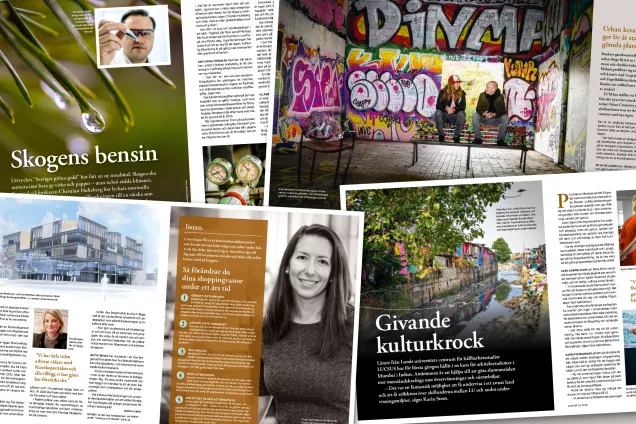Christine Blomquist conducts research on organisation and leadership at the School of Economics and Management. Over the past two years she has also worked centrally on leadership at LU, including an assignment from the vice-chancellor regarding the development of management groups.
Along with her colleague, Rikard Larsson, she is currently examining how public sector organisations in Skåne recruit and manage talent, in a study funded by the Council for Municipal Economic Research and Education (KEFU).
“Talent management is usually a HR issue, but we have chosen to examine the importance of bosses, as we know they are very significant”, says Christine Blomquist, who points to research showing that staff members who chose to resign, are more likely to be leaving their boss, rather than the organisation.
The researchers have identified superbosses in Region Skåne and the municipalities in Skåne that are participating in the study, which is based on the American Sydney Finkelstein’s research on superbosses.
“Superbosses lead in different ways, but what they have in common is an ability to develop new, good leaders”, she says.
In broad terms, there are three superboss categories: Scandinavian leadership, which means that the boss listens to, coaches and challenges their staff; the innovative boss who encourages creativity, develops and acts as a driving force, and “glorious bastards” who stimulate competition and rivalry.
According to Finkelstein, what distinguishes a superboss is not a special leadership style or personality. It is more a case of what they do. A superboss finds unique talent by actively searching, rather than sitting back and waiting for the right person to apply. Once in place, the superboss works closely with their staff and provides a lot of informal feedback and encouragement – they show great engagement in the individual, tasks and results. The superboss has high expectations and often gives reminders about the importance of staff members’ work. A strong feeling of unity is often created within the team, a culture in which team members are prepared to work hard because they think it is worth it.
In the public sector, bosses who are both considerate and good at setting boundaries have proved to be successful.
“These are bosses who are curious about the profession and the individual. But there is no soft wooliness, it’s all about engagement that also leads to results”, says Christine Blomquist.
“Trust” is the new in-word regarding leadership in public sector organisations. However, Christine Blomquist is wary of “trustful leadership”.
“It’s not satisfactory if this is only trust in a shallow sense, as it can result in passive bosses being able to continue being passive, and that staff become unsure about what it means to do a good job”, says Christine Blomquist.
She considers that trust must be balanced with clear requirements and engaged follow ups – a point that is also emphasised by researchers in the field. LU has a way to go in terms of demanding responsibility from staff members who are not doing their jobs properly or are behaving in an unacceptable manner.
“There is a perception at LU that you cannot be fired. This is damaging at team level and means there is a risk that unsound values get a foothold”, concludes Christine Blomquist.



